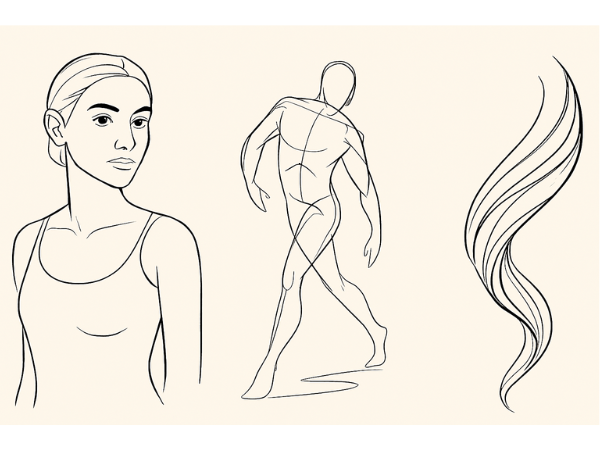Agnès Varda was a groundbreaking filmmaker. Her work changed the landscape of cinema.
Known for her unique storytelling style, she inspired many. Varda’s films blend personal stories with social issues. They capture real-life moments, often with a touch of humor. As a key figure in the French New Wave, she broke traditional rules.
Her creativity and vision opened doors for women in film. Varda’s legacy goes beyond her films. It lies in her ability to connect with audiences and spark conversations. Through her lens, she showed the beauty and complexity of life. In this post, we will explore her remarkable journey. We’ll look at her films, themes, and lasting impact on cinema and society.
Early Life And Influences
The life and legacy of Agnès Varda highlight a remarkable journey of creativity. Born in Belgium, Varda grew into a pioneering filmmaker. Her early life was rich with experiences that shaped her unique vision. Influences from her childhood and artistic inspirations paved the way for her groundbreaking work in cinema. Understanding her beginnings offers insight into her innovative storytelling and visual style.
Childhood In Belgium
Agnès Varda was born on May 30, 1928, in Brussels, Belgium. She grew up in a vibrant and diverse environment that deeply influenced her. Her family had a strong artistic background. Her father was a Jewish art dealer, and her mother was a Greek Orthodox from a rich family. This blend of cultures shaped her views on art and life.
Varda’s childhood was marked by several key experiences:
- She spent her early years in Brussels, surrounded by art and literature.
- She developed a love for photography at a young age.
- Her family’s frequent visits to museums sparked her interest in visual arts.
At 18, Varda moved to Paris to study at the École de la Rue de Vaugirard. Here, she explored theater and photography. This shift introduced her to new ideas and people. The artistic atmosphere in Paris inspired her to think differently. Varda’s early experiences laid a strong foundation for her future in filmmaking.
Artistic Inspirations
Varda drew inspiration from various sources throughout her life. Her artistic influences came from films, literature, and personal experiences. She admired many filmmakers and artists who shaped her style:
- Jacques Demy, her husband, influenced her storytelling.
- Documentary filmmakers like Jean Rouch inspired her approach to realism.
- Photographers like Henri Cartier-Bresson influenced her visual style.
Her fascination with the world around her played a crucial role in her work. Varda often explored themes of identity, memory, and the human experience. She was known for her unique ability to blend fiction and documentary. This made her films relatable and poignant. Her artistic journey was not just about film. It was about capturing life’s stories through a lens that reflected her vision.
Varda also found inspiration in literature. She loved reading works by authors like Virginia Woolf and Marcel Proust. Their exploration of emotions and consciousness influenced her storytelling. Varda’s diverse influences created a rich tapestry in her films, making her one of the most respected filmmakers of her time.
Career Beginnings
Agnès Varda, a pioneering figure in cinema, left a lasting mark on film history. Her career began with a unique vision. Varda’s journey into filmmaking was not typical. She turned her artistic eye towards the world around her, capturing everyday life with authenticity. These early years set the stage for her incredible contributions to film and culture.
First Film: La Pointe Courte
In 1955, Agnès Varda released her first feature film, La Pointe Courte. This film holds a special place in French cinema. It was one of the first films to showcase Varda’s unique style. The film combines fiction and documentary elements. This blend creates a rich narrative experience.
Plot Summary:
- Set in a fishing village in France.
- Explores the lives of local fishermen.
- Follows a couple facing personal struggles.
Varda’s storytelling is powerful. She captures the beauty of daily life. Her use of natural light and real locations enhances the film’s realism. Critics praised the film for its innovative approach. Here are some key points about La Pointe Courte:
| Aspect | Description |
|---|---|
| Genre | Drama / Documentary |
| Duration | 90 minutes |
| Notable Feature | First film of the French New Wave |
La Pointe Courte marked the beginning of Varda’s remarkable career. It laid the foundation for her future works. She established herself as a voice of a new generation of filmmakers.
Emergence In The French New Wave
Agnès Varda became a key player in the French New Wave movement. This movement started in the late 1950s. It challenged traditional filmmaking techniques. Varda’s innovative style made her stand out. She combined personal stories with social commentary.
Many young filmmakers were inspired by her work. They admired her creativity and vision. Varda often used non-professional actors. This choice added authenticity to her films. Some notable features of her emergence include:
- Use of handheld cameras.
- Breaking the fourth wall.
- Naturalistic dialogue.
Varda’s films often reflect her own experiences. She focused on women’s stories and their roles in society. Her unique perspective helped shape the New Wave. Varda’s influence reached beyond her films. She inspired future generations of filmmakers. Her legacy continues to thrive in modern cinema.
Signature Style
The life and legacy of Agnès Varda highlight her unique signature style. As a visionary French filmmaker, she shaped cinema with her creative lens. Varda’s approach combined emotional depth with visual storytelling. Her films resonate with audiences due to their distinct aesthetics and narrative techniques.
Visual Aesthetics
Agnès Varda’s visual aesthetics are both striking and poetic. She had a keen eye for color and composition. Varda often used natural light to create an intimate atmosphere. Her films showcase a mix of documentary and fiction styles, blurring the lines between reality and art.
Key elements of her visual style include:
- Color Palette: Varda favored vibrant colors, enhancing emotions.
- Framing: She used unconventional framing to evoke feelings.
- Symbolism: Objects in her films held deeper meanings.
- Texture: Varda embraced textures to give a tactile feel to her scenes.
Her most famous work, “Cléo from 5 to 7,” exemplifies her visual style. The film plays with time and space, capturing the essence of a woman’s experience. Below is a table summarizing the visual techniques used in her work:
| Technique | Description |
|---|---|
| Natural Light | Creates authenticity and intimacy. |
| Vibrant Colors | Enhances emotional depth. |
| Unconventional Framing | Invites viewers into her world. |
Narrative Techniques
Agnès Varda’s narrative techniques set her apart from other filmmakers. She often combined personal stories with social commentary. Her films invite viewers to reflect on everyday life and human experiences.
Notable narrative techniques include:
- Non-linear Storytelling: Varda played with time, creating unique structures.
- Documentary Elements: She included real-life moments to enhance authenticity.
- Personal Voice: Varda often inserted her own perspective and experiences.
- Character-Driven Plots: Her films focus on rich, complex characters.
In “The Gleaners and I,” Varda uses a personal lens to explore social issues. She captures the lives of gleaners, people who collect leftover crops. This documentary-style approach deepens the narrative, allowing viewers to connect with the subject matter. Her techniques engage audiences, encouraging them to think critically about the world around them.
Notable Works
Agnès Varda was a pioneering filmmaker known for her unique vision and storytelling style. Her notable works reflect her deep understanding of human emotions and social issues. Varda’s films often blend documentary and fiction, creating a powerful impact. Each piece reveals her creativity and perspective on life. These films shaped cinema and inspired many artists. Two of her most celebrated works are Cléo from 5 to 7 and The Gleaners and I. Both films showcase her talent and passion for storytelling.
Cléo From 5 To 7
Cléo from 5 to 7, released in 1962, is a groundbreaking film that explores the life of a young woman. Cléo, played by Corinne Marchand, waits for test results that may change her life. The film unfolds in real-time over two hours, creating an intimate connection with the audience.
Key themes include:
- The fear of mortality
- The search for identity
- Social commentary on women’s roles
This film is notable for its innovative style. Varda uses:
- Long takes
- Vibrant colors
- Symbolic imagery
| Aspect | Details |
|---|---|
| Director | Agnès Varda |
| Year Released | 1962 |
| Main Character | Cléo |
| Runtime | 90 minutes |
Varda’s use of Paris as a backdrop adds depth. The film captures the city’s essence. It intertwines Cléo’s internal struggle with the vibrant life around her. This juxtaposition creates a rich narrative. Varda’s work in Cléo from 5 to 7 remains influential.
The Gleaners And I
The Gleaners and I, released in 2000, is a documentary that reflects Varda’s love for people and their stories. The film focuses on gleaning, the act of collecting leftover crops after harvest. Varda introduces viewers to various gleaners in France. She highlights their lives and struggles.
Important elements include:
- Social issues of waste
- Economic disparities
- Personal anecdotes
The film is notable for its:
- Intimate interviews
- Beautiful cinematography
- Personal reflections from Varda
Varda uses her camera as a tool for connection. She shares her own experiences as a gleaner. The film blends the personal and the universal. It invites audiences to consider what we discard in life.
| Aspect | Details |
|---|---|
| Director | Agnès Varda |
| Year Released | 2000 |
| Focus | Gleaning |
| Runtime | 82 minutes |
The Gleaners and I is a reflection on society. Varda’s lens captures the beauty in overlooked moments. This film continues to resonate with audiences. It encourages us to rethink waste and value in our lives.
Themes And Motifs
Agnès Varda was a pioneering French filmmaker known for her unique vision and storytelling. She explored various themes and motifs in her works. Varda’s films often reflect her thoughts on society, culture, and personal experiences. Her ability to blend the personal with the political set her apart. This section will delve into two prominent themes: feminism and memory. Both themes showcase her innovative approach to filmmaking.
Feminism In Film
Varda’s films boldly address feminist themes. She challenged traditional gender roles and highlighted women’s experiences. Her work encourages viewers to see women as complex characters. She often portrayed strong female leads who navigate their own paths. Varda’s films shine a light on women’s stories, often overlooked in cinema.
Key elements of Varda’s feminist approach:
- Strong female characters
- Critique of patriarchy
- Exploration of female identity
In films like Cléo from 5 to 7, she tells the story of a woman facing mortality. This film captures the internal struggles of women in society. Varda’s portrayal of women is both realistic and relatable. Her characters often deal with societal expectations and personal desires.
Here is a table summarizing Varda’s notable feminist films:
| Film Title | Year | Key Themes |
|---|---|---|
| Cléo from 5 to 7 | 1962 | Identity, Mortality, Feminism |
| The Gleaners and I | 2000 | Women, Society, Art |
| Vagabond | 1985 | Freedom, Isolation, Gender |
Memory And Identity
Memory and identity are central to Varda’s storytelling. Her films often explore how memories shape who we are. She captures the essence of personal stories, connecting them to broader themes. Varda uses visual storytelling to reflect on the past. Her unique style invites viewers to reflect on their own memories.
Key aspects of memory and identity in her films:
- Personal narratives
- Use of archival footage
- Interviews with subjects
In The Gleaners and I, Varda examines the lives of marginalized people. She connects their experiences to her own memories. This blending of personal and collective memory creates a rich tapestry. Varda’s work encourages viewers to think about their identities.
Her innovative techniques include:
- Mixing documentary and fiction
- Using voiceovers to share thoughts
- Incorporating photographs and home videos
Varda’s films invite audiences to reflect on their journeys. She shows how memories influence identity and connection to the world.
Awards And Recognition
Agnès Varda was a pioneering filmmaker who left an indelible mark on cinema. Her creativity and vision changed how stories are told on screen. Throughout her career, she received numerous awards and recognition. These honors reflect her talent and influence in the film industry. Varda’s unique voice and style inspired many filmmakers. Her legacy continues to resonate, making her a significant figure in both French and global cinema.
Cannes Film Festival
The Cannes Film Festival is one of the most prestigious film festivals in the world. Agnès Varda had a notable presence at Cannes. Her films often showcased her distinct perspective on life and society. Varda’s work received critical acclaim, earning her several awards at the festival.
- 1962: Varda won the Palme d’Or for “Le Bonheur.” This was a significant honor.
- 1985: She received the Best Director award for “Vagabond.” The film was a powerful exploration of freedom and isolation.
- 2015: Varda received the Honorary Palme d’Or. This award celebrated her lifetime achievements in filmmaking.
Her films often featured strong female characters. They challenged societal norms and explored complex themes. Varda’s unique approach to storytelling made her a beloved figure at Cannes. Her work inspired many filmmakers, especially women in cinema.
| Year | Film | Award |
|---|---|---|
| 1962 | Le Bonheur | Palme d’Or |
| 1985 | Vagabond | Best Director |
| 2015 | N/A | Honorary Palme d’Or |
Academy Award Honor
Agnès Varda’s impact on cinema was recognized at the Academy Awards. In 2018, she received an Oscar for her documentary “Faces Places.” This film was a collaboration with artist JR. It showcased their journey through rural France, capturing intimate moments with locals.
- 2018: Nominated for Best Documentary Feature.
- 2018: Received an Honorary Academy Award for her lifetime achievements.
Varda was one of the first women to receive an Oscar. Her recognition at the Academy Awards highlighted her contributions to film. She broke barriers in an industry often dominated by men. Varda’s storytelling style and themes are still celebrated today.
Her work continues to inspire new generations of filmmakers. Agnès Varda’s awards and honors reflect her talent and commitment to cinema. Her legacy is a testament to her visionary spirit.
Conclusion
Agnès Varda changed the world of film forever. Her unique vision inspired many filmmakers. She showed us the beauty in everyday life. Through her work, she encouraged us to see stories everywhere. Varda’s influence continues in modern cinema. Her legacy lives on in every frame she created.
She reminds us to embrace our creativity and originality. Varda’s films invite us to think deeply and feel strongly. Her spirit will always guide future generations of artists. Celebrating her life is celebrating the power of storytelling.




